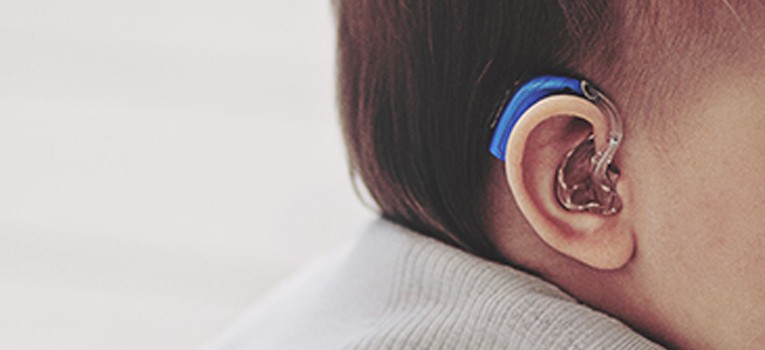Having a child with a hearing loss, is definitely a stressful journey for parents to walk through. Seeking for medical help, and making arrangements to choose a hearing aid accordingly, will not be an easy task, since it carries a completely different subject. In this article, the factors which should be kept in mind, in such a scenario are described in a nut shell.
The development of speech and language plays a very important role in the early stages of a child’s life. So, it is really necessary to identify problems a child might be having, related to any of these aspects in order to ensure a healthy life.
Choosing the correct hearing aid for a child is not as the same as that for an adult. In fact, an adult can clearly say if the sounds heard on the aid are too soft or too loud or whether it is working properly or not, unlike a baby or a young child. Therefore, it is highly recommended to gain help from an experienced pediatric audiologist, in the case of selecting, testing and fitting a good hearing aid for a child.
There are many factors which should be considered when the most suitable hearing aid is selected. Those include, hearing problem the child is having and its severity, durability of the aid, physical features of child’s ear (size and shape), service from the manufacturer and capability of connecting the aid to other devices, used in school. Although, some adults may prefer wearing the hearing aid only to one ear, pediatric audiologist always advice parents to have hearing aids in both ears of the child, since it can result in poor development of speech and language, if used otherwise. It will also be important for the safety of child, as he will be aware about the exact direction where the sound waves are coming from. Therefore, using hearing aids for both the ears is better. Hearing aid can be customized depending on the need of the children.
Behind the ear (BTE) and in the ear (ITE) hearing aids are the most popular ones available in the modern market. BTE is more suitable for infant and children while ITE are more suitable for older children and adults.
Furthermore, it is always better to check the efficiency of a hearing aid by placing it in child’s ears. Audiologist will carry this on, by recording the gain of the aid, using a device called probe microphone system. A tiny, firm tube which is connected to the microphone is placed next to child’s ear mold, and it will help to assess the amount of sound waves generated by the hearing aid, while it is placed in the ear. It is also required to take appropriate measurements to fit the hearing aid properly in the child’s ears before the check-up is taken place.
In infants and small children, the above method is sometimes difficult to be carried out, since they would not be willing to keep the probe in their ears for a long time. In situations like that, audiologists use a special procedure called Real-Ear-to-Coupler Difference (RECD) where a very quick probe microphone measurement is taken, and hearing aid is tested in a separate testing box, thereby adjusting it according to the child’s hearing loss.
Finally, when a proper hearing aid is selected, it is the sole responsibility of parents to take measures to make the child get used to the new device. Initially, the aid can be put in ears while the child is engaging in fun activities and gradually increase the time of wearing until all day.




